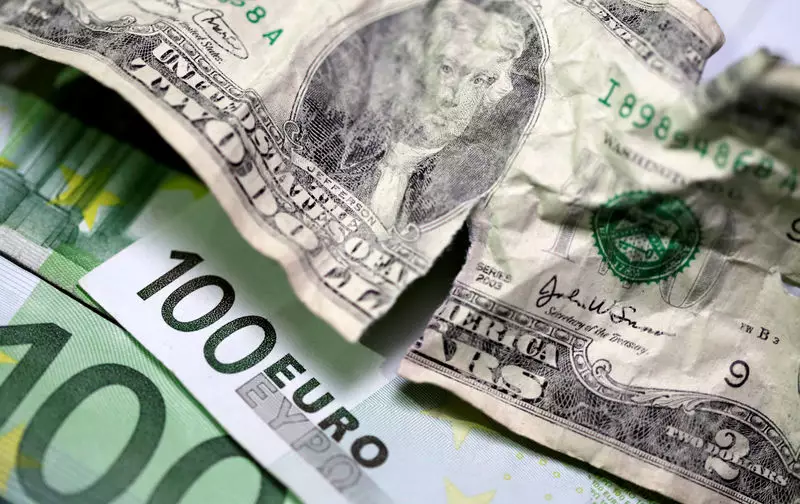In the world of finance, currency values fluctuate based on numerous economic indicators and geopolitical events. Recently, the US dollar has seen a significant surge, reaching new heights while the euro has struggled under the weight of disappointing economic data from the eurozone. This article delves into the current dynamics surrounding the dollar’s ascendance and the euro’s decline, while also exploring the implications of such movements for global financial markets.
As of late November 2023, the Dollar Index, which measures the dollar against six major world currencies, soared by 0.6% to an impressive 107.614. This rise marks the dollar’s highest standing since early October, driven by a combination of political outcomes and economic performance indicators. Media reports highlight that the dollar’s strength is partly attributed to former President Donald Trump’s recent electoral victory, stirring expectations that his potential economic policies may reignite inflation. Such prospects complicate the Federal Reserve’s ability to lower interest rates in the foreseeable future, which historically tends to weaken a currency.
Furthermore, robust employment reports have bolstered investor confidence. With jobless claims indicating a slowdown that deviated from expectations, market analysts have re-evaluated their stances on monetary policy. Statements from the Federal Reserve’s leadership, particularly from New York Fed President John Williams, have emphasized a cautious approach towards interest rate cuts. With inflationary pressures remaining a top concern, traders are now recalibrating their outlook, resulting in a noteworthy decrease in anticipated likelihood of an interest rate cut.
The US dollar’s reputation as a haven asset has become more pronounced due to the current geopolitical tensions, particularly the escalating conflict between Russia and Ukraine. The ongoing war has heightened market volatility, prompting investors to pivot towards safer investments like the US dollar. Analysts from financial institutions suggest that the extent of the conflict’s escalation is being assimilated into market sentiment, which favors the dollar as a solid choice during uncertain times.
In stark contrast to the dollar’s performance, the euro has experienced considerable difficulties. Trading at 1.0389, the euro reached a two-year low against the dollar, exacerbated by a slew of negative economic indicators from the eurozone. Most notably, the latest composite Purchasing Managers’ Index (PMI) data signaled an unexpected downturn in business activity in November, showing the dominant services sector contracting while manufacturing faces deeper recessionary pressures.
The eurozone PMI recorded a troubling 48.1 — a stark indication of economic contraction as it fell below the critical 50.0 benchmark. Such data has only intensified concerns among investors regarding the economic stabilization efforts in the European Union, underscoring the index’s newfound importance in shaping monetary policy discussions by the European Central Bank (ECB).
The economic challenges are not limited to the eurozone; the British pound is also feeling the strain as GBP/USD fell to 1.2536, its lowest level against the dollar since May. Recent economic data indicated a decline in business activity in the UK, with the preliminary S&P Global Composite PMI slipping to 49.9, indicating a contraction in business output for the first time in over a year. These readings suggest a critical shift in the UK economy, further complicating its response to global market dynamics.
The current landscape of currency trading is a complex tapestry woven from political outcomes, economic data, and global events. The US dollar is enjoying a phase of robust performance buoyed by favorable economic indicators and geopolitical tensions. Meanwhile, the euro and the British pound are grappling with internal challenges that have undermined their respective values. As investors navigate these turbulent waters, understanding the intricate connections between economic indicators and currency valuations becomes increasingly vital for making informed financial decisions. The coming weeks will be pivotal as market reactions to evolving data may shift the current trends, emphasizing the ever-changing reality of global financial markets.

